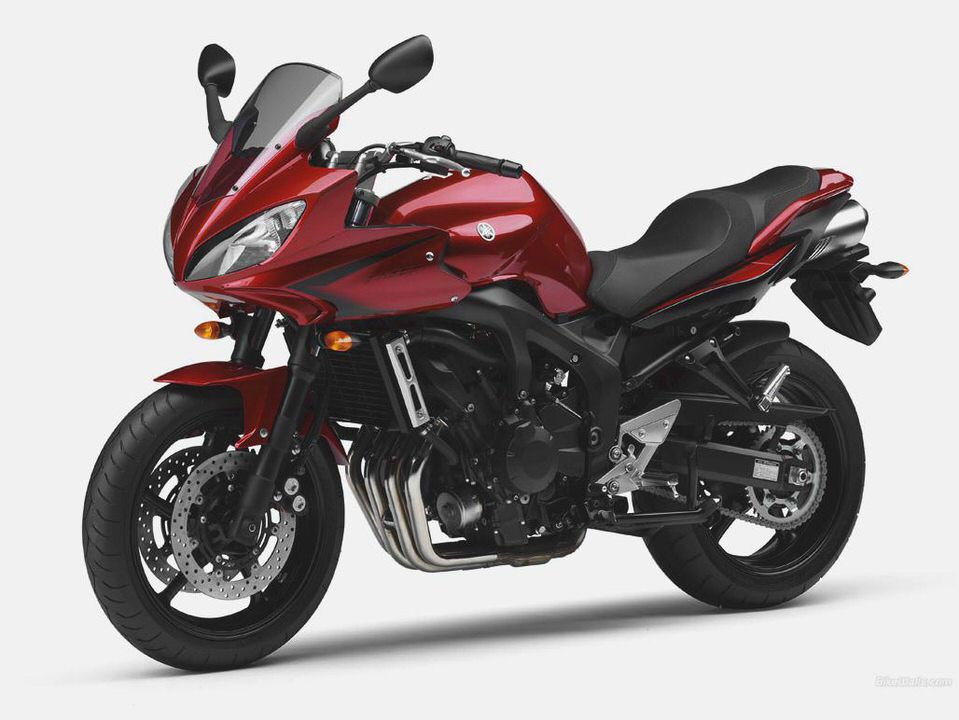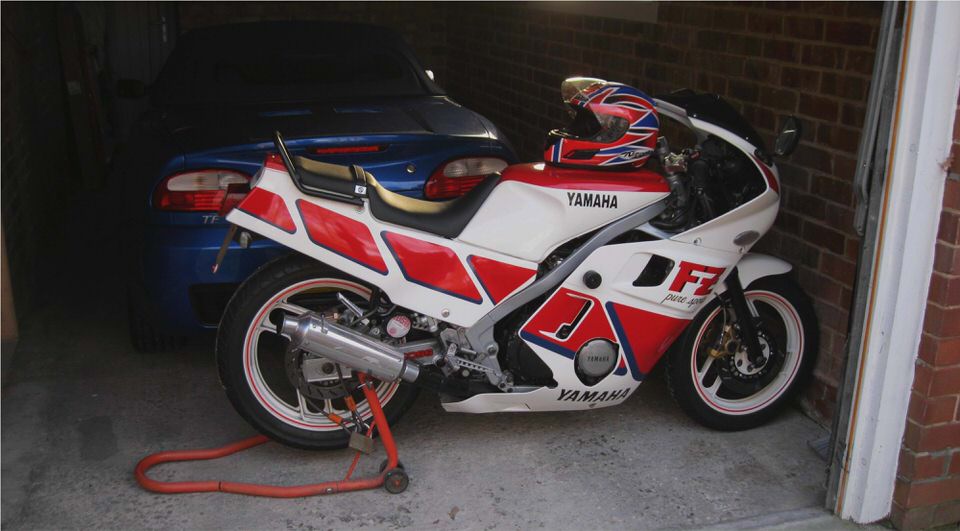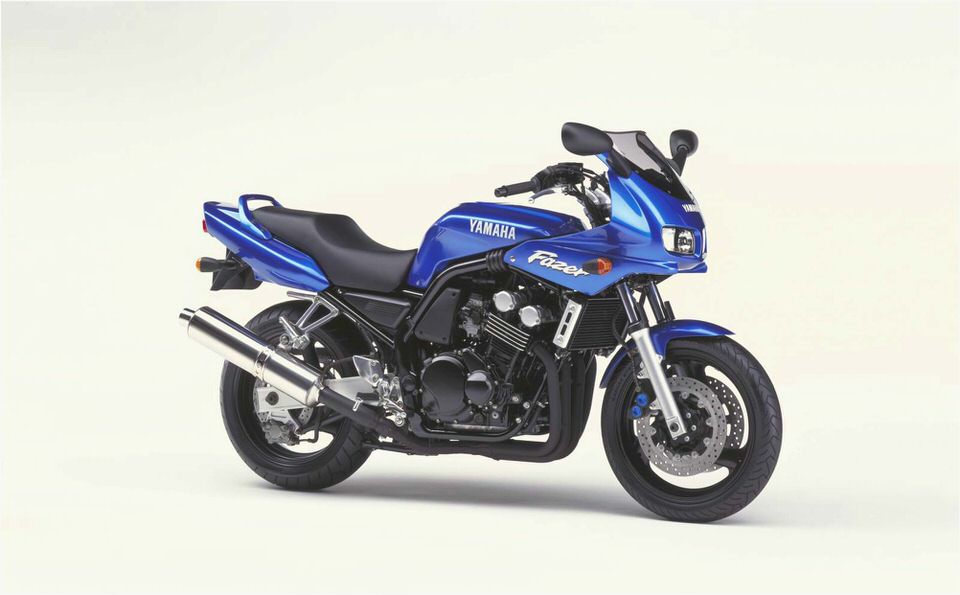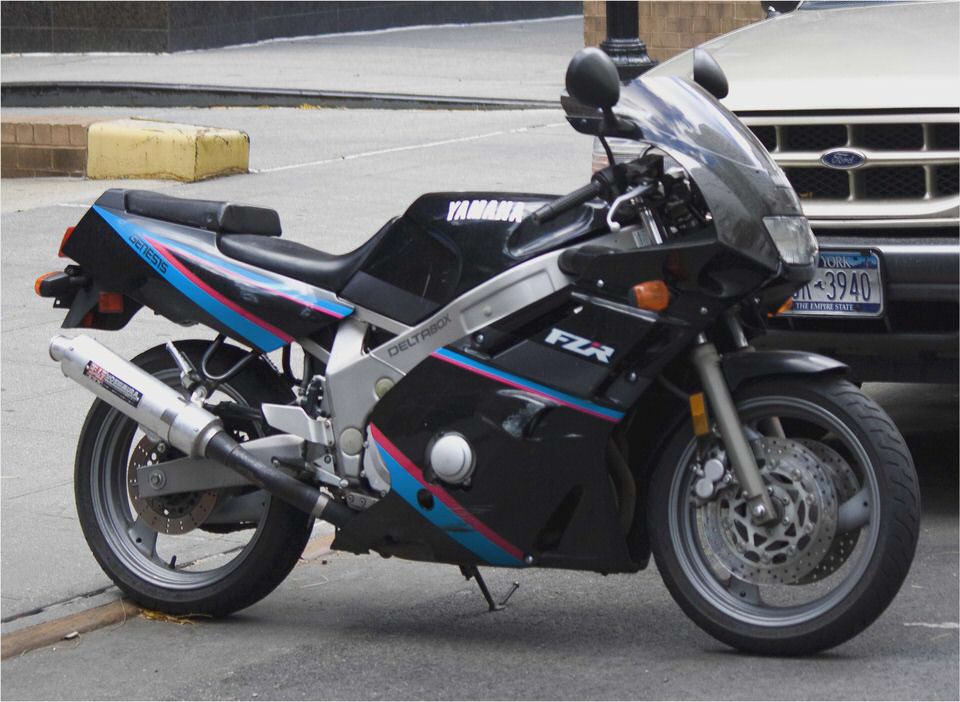
Yamaha FZ-600
The FZ-600 was Yamaha’s first true attempt at a 600 cc Race Replica with the growing interest in MotoGP Road Racing taking hold in the mid-1980s. Many FZ owners confuse their bikes with the later FZR models due to similar name and body styling.
A major difference between the FZ-600 and its successor, the FZR-600, is the Delta Box One-Frame the FZR-600 incorporated, like the one used on the earlier FZR-400s. This gave the FZRs more rigid support, tighter handling and reduced weight. Another notable difference was that the FZR-600’s engine was tilted forward to a significantly greater angle, thus providing a lower center of gravity and even more handling capability.
The almost horizontal angle also allowed the carburetors to be mounted vertically above the intake manifolds, letting gravity help the venturi, and opening up the door for extensive performance mods like velocity stacks. However, the FZR-600 owed much to its predecessor, such as the sleek body stylings, responsive suspension, and race oriented-spirit.
History
The Yamaha FZ-600 was produced from 1986-1989 being replaced by the FZ R -600 (1989-1999). The FZ engine was closely derived from the XJ-600 motor, which can itself trace it’s lineage back through the XJ-550 to the XJ-400, a Japanese home market model. This motor was also used in the Seca II, the XJ600 (FJ600), and the YX600 Radian.
It also shared brakes with a huge number of other Yamaha Models before, during, and even after its production. The same front brake master cylinder was used on the FZR-600 up until the end of its production (1999). In 1986 Yamaha produced the FZ Pure Sport version, with more performance oriented modifications. The FZ-600’s main competitors when it was released were the Kawasaki GPZ600 and Honda CBR600F.
However Suzuki’s Teapot GSX-600 Katana was given little consideration, with the GSXR-750 getting all the attention at the time. Apparently when released the FZ-600 had an American showroom price of around $3000.
Engine
The FZ came as a 4-stroke, four-cylinder, four-carburetor, naturally aspirated, air-cooled engine package mated with a six-gear constant mesh transmission, dropped into a rectangular tube frame that seemed pieced together from a modern standpoint, balanced upon a large rear mono shock hidden between the swingarm and subframe under the battery complementary to two smooth front forks. It has two large circular headlights iconic of Yamaha FZR’s large and small displacement.

The fuel tank has a triangular side profile that matches the frame well, with a flat top and a fuel petcock at the bottom left with an overflow hose fitting at the bottom of the front. The four Mikuni BS-30 carburetors utilize the Round-Slide design with the diaphragm assembly actuating the main needle jets, with plastic floats and brass slides.
It uses two ignition coils (two cylinders each) controlled by a CDI (Capacitor Discharge Ignition) printed circuit board unit, and timed by a two brush Pick-Up Coil mounted to the crank. The engine oil doubles as the transmission’s lubricant, wetting the manual clutch. The FZ-600 was air-cooled however, with a radiator-looking oil cooler mounted on the front of the frame between the engine and front wheel.
It also had a thundering four-into-one exhaust. It has a 4-fuse, fuse block providing for the headlights, turn signals, rectifier/regulator, etc.
New Models
Since 1988, the FZ-600 was replaced by not one but several later generations of bikes that Yamaha produced that make it merely a museum piece rather than a competitor in performance, even as nimble as it may be, and has slowly faded out of the front of motorcycling mainstream. The FZ name has re-emerged in recent years with Yamaha’s new line of sport-touring bikes that are offered as the alternative to the aggressive YZF-R1 and YZF-R6.
The new FZ come as either 600cc or 1000cc engine size and are optionally naked (no fairing) or come with a half-fairing. They share the engine of their race-geared R1/R6 siblings however their riding positions and suspension set ups are more adapted to everyday street use and long touring rides. These second generation FZ bear little to no resemblance to their older namesakes, and nowhere is the original FZ even mentioned in any marketing or publicity surrounding this new line.



- 2003 Yamaha Royal Star Venture: MD Ride Review …
- 2012 Yamaha Zuma 50F – Used 2012 Zuma 50 F at Motorcyclist Magazine
- 2010 Yamaha Majesty 400 ABS Review Scooters Mopeds
- Throttle: 2014 Yamaha MT-09
- Motorcycle tryout: Yamaha XT660 X Helmet Hair – Motorcycle Blog
